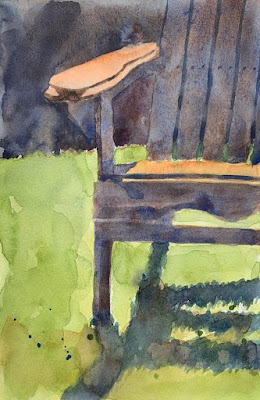Juggling
In his book "Mastering Color and Design in Watercolor," Christopher Schink says this about the stages of artistic development:
As an artist, you go through three basic stages of development. As a beginner, you have the greatest interest in gaining some control of the medium. In other words, just getting the paint to stick to the paper is an overriding concern, and producing a technically competent watercolor is a major achievement. At this stage, whether you have organized the color and design of your painting in an orderly or expressive way is of little importance. Unfortunately, some watercolorists never advance beyond this initial stage but continue to concentrate entirely on developing technical skills. Mistaking virtuosity for substance, they become better and better at saying less and less.
The second stage of artistic development begins when you recognize that control of the medium or even virtuosic technique will not produce an effective or satisfying watercolor. You then must learn to develop the skill to organize your painting into a clear, cohesive design. So, at this stage, your primary concern is in producing not only a competently rendered watercolor but also a convincing design. The skill to do this is acquired through practice and understanding.
It isn't until you have acquired an understanding of color and design and a control of the medium that you can begin the third stage of development, the point at which you can combine your knowledge and skill to express your personal interests, ideas, and feelings in an imaginative and creative way. If you practice and study, technique and design will become second nature. Your primary concern now is in producing an expressive work of art.
Right now, I am intellectualizing all that I know in theory, and applying it to my art in a left-brained way. I haven't learned the "syntax," so I have to think as I create. It isn't second nature yet. I am in Stage 2 - sometimes I think I bypassed Stage 1 when I cannot do what I want to do in terms of technique. I do understand what makes a good design on the page, and Ian's lecture about the 4 most important things in a painting (the 4 edges) made a huge difference.
In these sketches done in my front yard with a ViewCatcher, the 4 edges instantly helped make good compositions. They are simple in terms of content, but the play of light and shadow is remarkable. I did the paintings in my studio after the sketches from photos I took. I was focusing on design and color temperature - I couldn't handle value and color intensity as well! That's the juggle for me. Or struggle?







Comments
Post a Comment